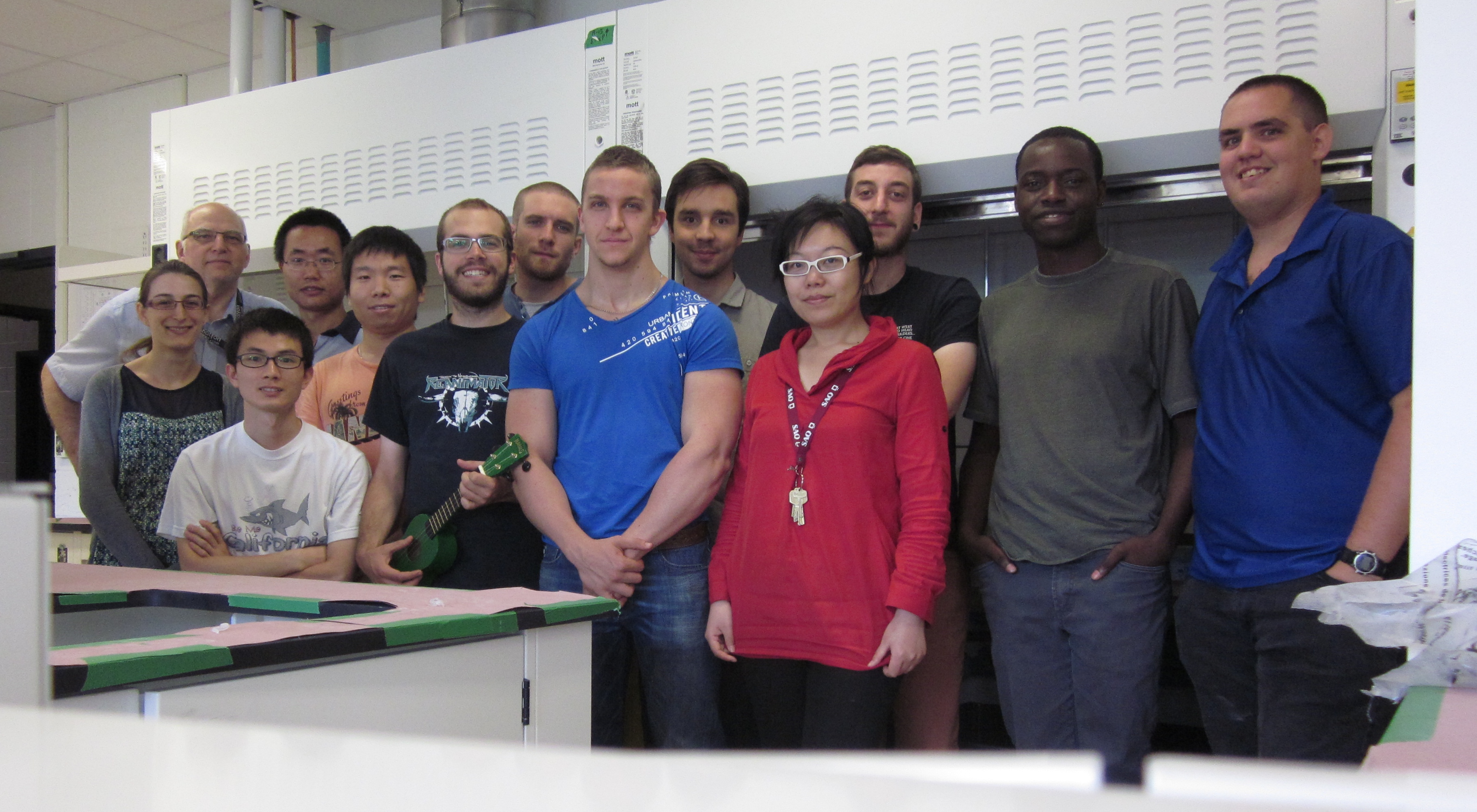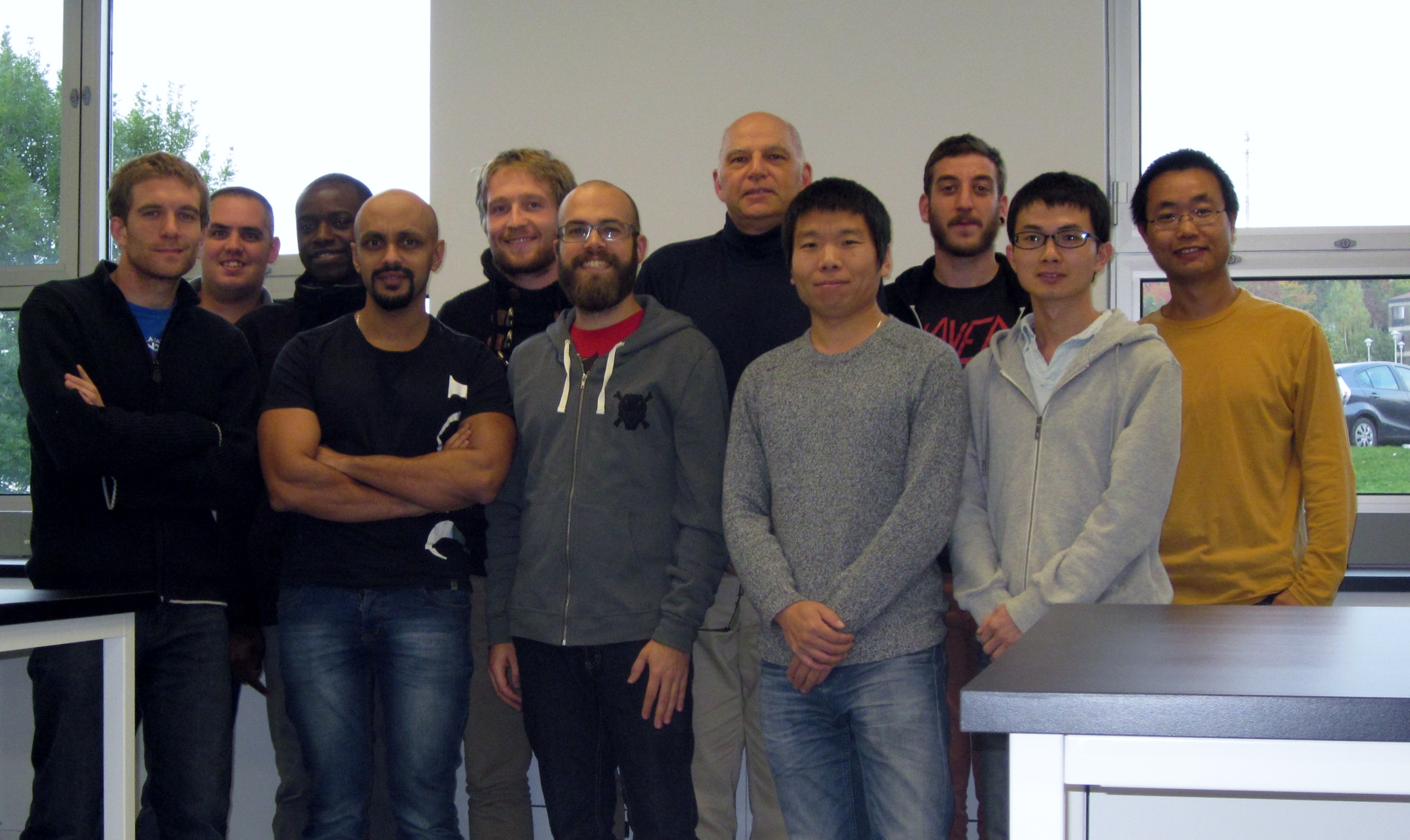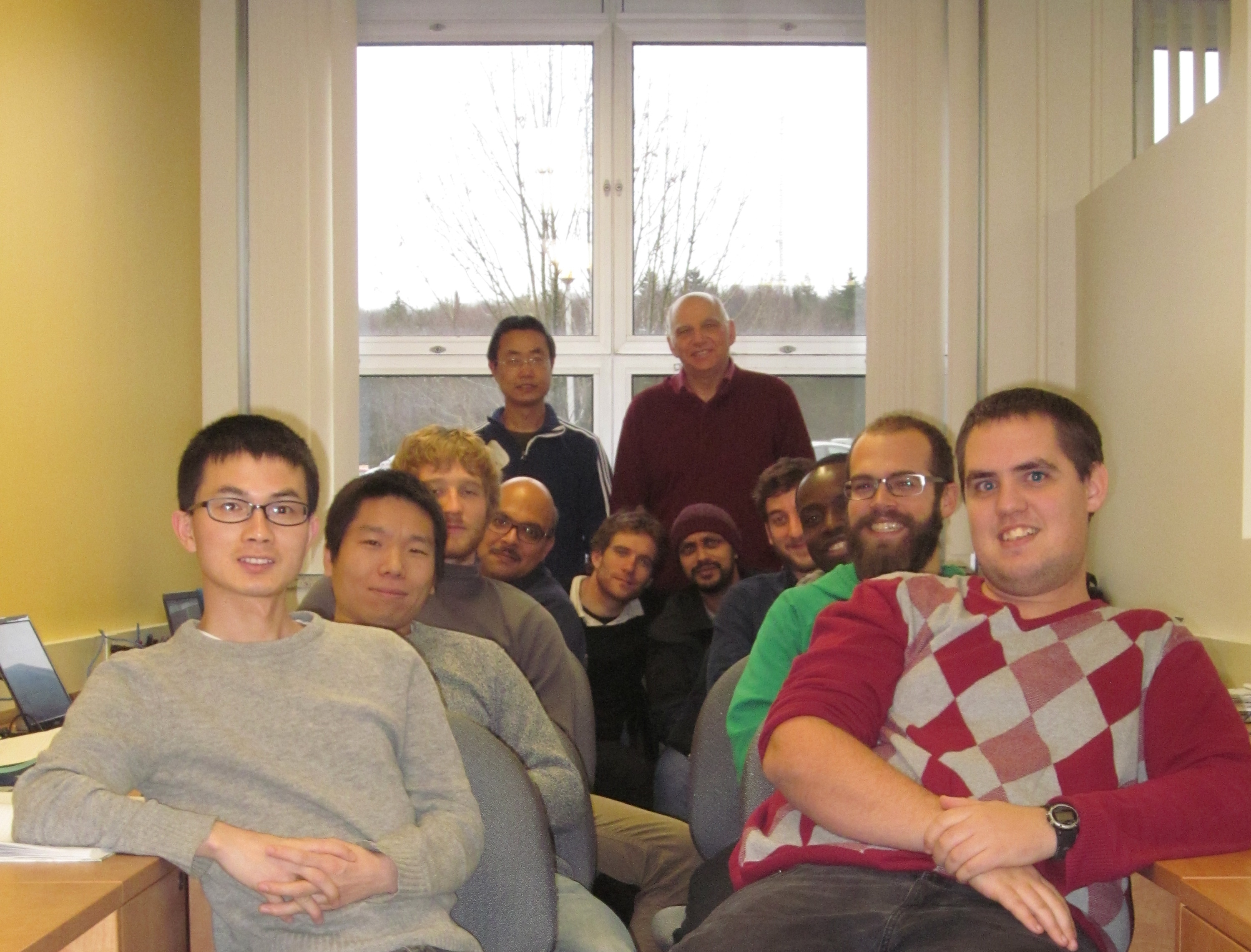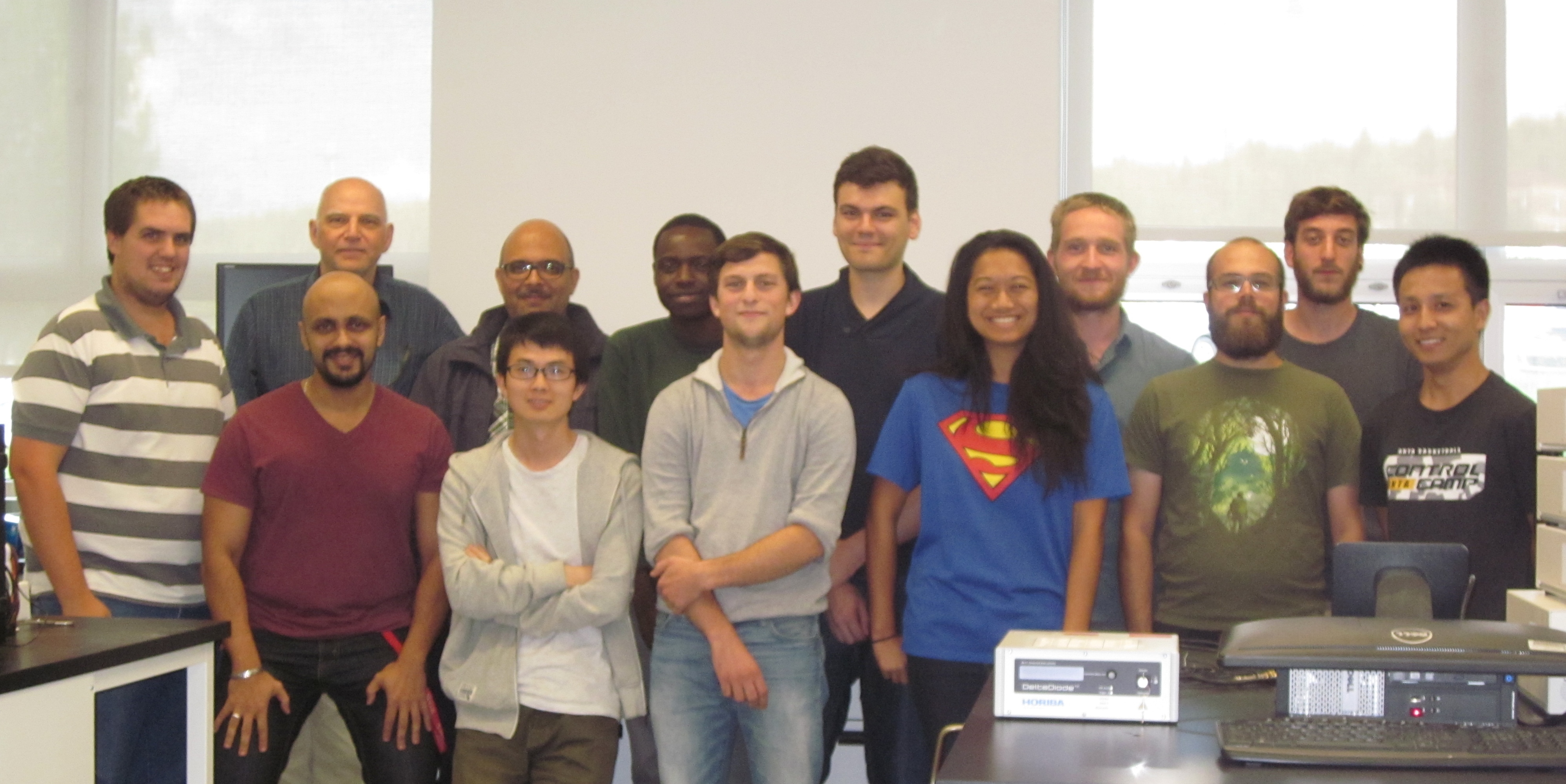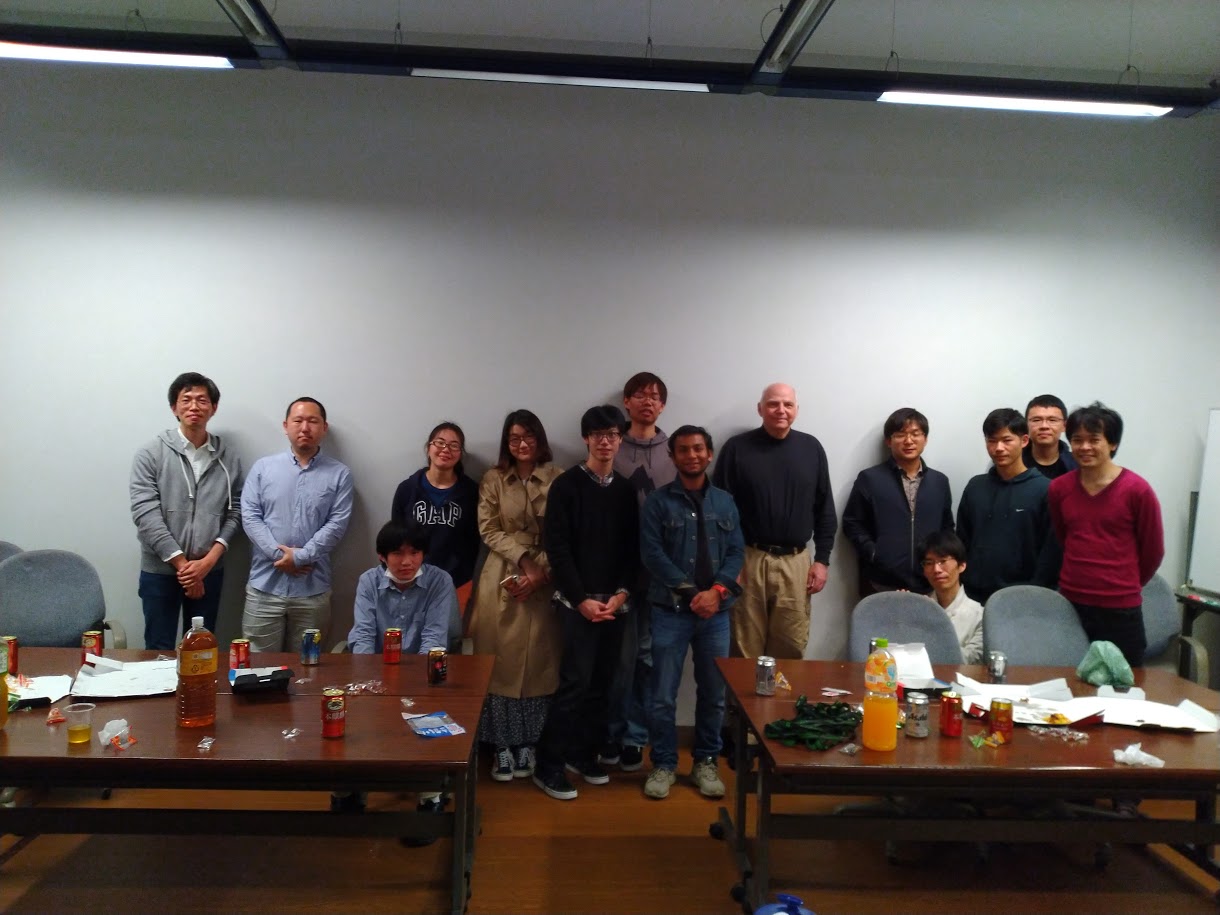Bienvenue dans le groupe du professeur Harvey / Welcome to the Harvey group
Le groupe du professeur Harvey se concentre sur la conception, la synthèse et les analyses de systèmes conjugués pour des applications dans les cellules photovoltaïques. Plusieurs de nos projets incorporent des unités porphyriniques dans des chaînes polymères conjuguées pour des applications dans les cellules solaires plastiques à hétéro-jonctions. Nous incorporons aussi des métaux de transitions dans les chaînes polymères pour observer les changements de propriétés photoniques. Une addition récente dans la librairie des systèmes conjugués est le dipyrrométhane-bore (BODIPY) que nous introduisons dans les chaînes polymères. D’autres projets en cours prennent avantage de l’effet « push-pull » pour concevoir des colorants à base de porphyrines pour des applications dans les cellules solaires à pigments photosensible (DSSC).
Le rôle de l’étudiant consiste à concevoir un nouveau projet sur une idée originale. Sa progression se fait à tavers la conception innovatrice du projet, la synthèse et les analyses physiques. Notre laboratoire est équippé d’un parc d’instruments riche en spectrophotometres pour les études photophysiques pour les analyses nécessaires des nouveaux produits. En conséquence, la formation des étudiants se fait à la fois au niveau de la synthèse mais aussi au niveau de l’apprentissage de l’utilisation d’une panoplie d’instruments analytiques, et ce couplé avec des calculs théoriques de type DFT en support à leurs travaux de recherché.
En 2017, le journal Inorganic and Organometallic Polymers and Materials a consacré son dernier numéro au professeur Pierre D. Harvey pour sa contribution exceptionnelle dans le domaine des polymères de coordination et organométalliques.
The Harvey research group focuses on the design, synthesis and analysis conjugated systems for application in photovoltaic cells. Many of our projects incorporate porphyrin units into conjugated polymeric systems for applications in the bulk heterojunction solar cells.We also incorporate transition metals (such as platinum) into our polymer backbones to monitor their changes in photonic properties. A recent addition to our repertoire of conjugated systems is the boron-dipyrromethane (BODIPY) unit which we are now trying to incorporate into similar polymeric. Other projects look to take advantage of the push pull mechanism in order to design porphyrin based dyes for application in dye-sensitised solar cells (DSCC’s).
Student involvement in their projects begins with the conception of the idea and the student is able to follow their project through the design, the synthesis and then the analysis. Our lab is equipped with many of the instruments that are needed to make the photophysical measurements that are required to analyse our products.This means that students in our lab will not only be able to synthesise their product, but they will be trained on the analytical instruments and will be able to carry out their own analysis.
In 2017, the journal of Inorganic and Organometallic Polymers and Materials dedicated it’s last issue to Professor Pierre D. Harvey for his outstanding contribution to the field of photonic coordination and organometallic polymers! Congratulations Pierre!

Département de Chimie
Faculté des sciences
2500 Boulevard de l’Université
Sherbrooke, QC J1K 2R1

